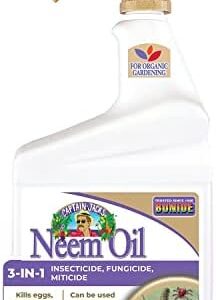Container gardening is a fantastic way to bring some greenery and life into even the smallest of spaces. Whether you live in a tiny apartment with only a balcony or have a tiny backyard that doesn’t leave much room for a traditional garden, containers can be the perfect solution for growing the plants you love. This article will discuss the basics of container gardening and provide some tips for growing beautiful plants in small spaces.
First things first, let’s talk about the containers themselves. When it comes to choosing containers for your plants, there are a few things to consider. The most important factor is drainage – plants need good drainage to thrive, so make sure that your containers have drainage holes in the bottom. You can also add a layer of gravel or pebbles to the bottom of the container to help with drainage.
Next, think about the size of the container. Different plants have different root systems, so it’s important to choose a container that will give your plants enough room to grow. As a general rule of thumb, larger plants will need larger containers. You should also consider the material of the container – plastic containers are lightweight and easy to move around, while terracotta containers are more porous and can allow for better airflow to the roots of the plant.
Once you’ve chosen your containers, it’s time to think about the plants you want to grow. When it comes to container gardening, the sky’s the limit – you can grow flowers, herbs, vegetables, and even small fruit trees in containers. Just keep in mind that some plants will need more space than others, so make sure to do your research and choose plants that will thrive in the size of container you have.
When it comes to planting your containers, there are a few things to keep in mind. First, make sure to use a good quality potting soil – regular garden soil can be too heavy and won’t provide the drainage that your plants need. You can also mix in some compost or fertilizer to give your plants the nutrients they need to thrive. When planting your containers, be sure to leave enough room for the roots of the plant to grow – overcrowding can lead to stunted growth and even disease.
Now that your containers are set up and planted, it’s time to think about care and maintenance. Container plants need regular watering, especially during the hot summer months. Make sure to water your plants when the top inch of soil is dry, and be sure to water them deeply to encourage strong root growth. You can also add a layer of mulch to help retain moisture and keep your plants hydrated.
In addition to watering, container plants will also need regular feeding. You can use a liquid fertilizer or slow-release fertilizer to give your plants the nutrients they need to thrive. Be sure to follow the instructions on the fertilizer package, as over-fertilizing can be just as harmful as under-fertilizing.
One of the great things about container gardening is the ability to move your plants around to find the best spot for them. If your plants aren’t getting enough sun or are struggling with pests, you can easily move them to a different location to help them thrive. Just be sure to acclimate your plants to their new location gradually, as sudden changes can be stressful for them.
Container gardening is a wonderful way to bring some greenery and beauty into even the smallest of spaces. With a little bit of planning and care, you can grow beautiful plants that will brighten up your home and bring joy to your life. So whether you have a tiny balcony or a small backyard, consider trying your hand at container gardening – you’ll be amazed at the beauty you can create in a small space.






